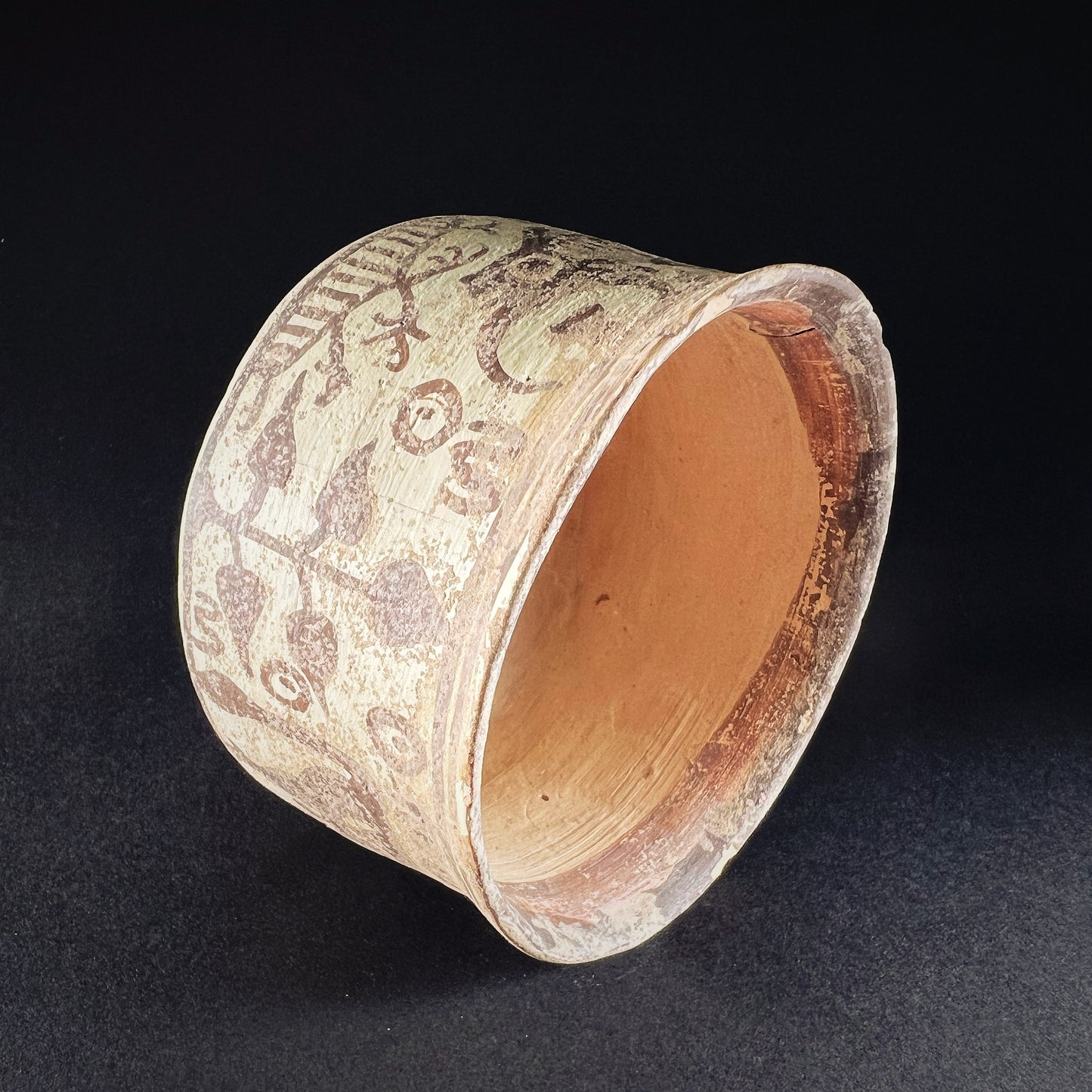Harappan Terracotta Jar with Zebu Bull Motif
Harappan Terracotta Jar with Zebu Bull Motif
Couldn't load pickup availability
Harappan Civilization, c. 2600–2450 BC, Sindh, Pakistan
A charming wheel-thrown bichrome terracotta jar featuring a petite foot, gently squat walls, and a gracefully flared rim. The exterior is masterfully decorated with scenes depicting pairs of zebu bulls—rendered with elongated bodies, towering humps, immense horns, and strikingly large eyes—each separated by delicately painted peepal trees. These vivid figures are set against a backdrop of flowing geometric motifs, including suns, clouds, vegetal designs, and rhythmic linear bands, all executed with a fluidity and confidence that speak to the sophisticated artistry of Harappan potters.
The powerful zebu bull, with its distinctive hump and commanding horns, is a recurring and potent symbol within the material culture of the Indus Valley Civilization. Frequently depicted on painted pottery, terracotta figurines, and iconic seals, the bull may symbolize strength, protection, leadership, or possibly religious sacrifice, reflecting the deep symbolic and practical importance of cattle in Harappan society.
Vessels such as this were likely used for both everyday domestic functions and ritual purposes. The presence of symbolic animal imagery—particularly the revered zebu—suggests the vessel held significance beyond simple utility. This exquisite jar embodies the elegance, symbolic richness, and technical mastery that characterize the Harappan Civilization, one of the world’s earliest and most sophisticated urban cultures.
An exceptional piece for collectors of early ceramics, South Asian antiquities, or ancient art of the world’s first great cities.
Good condition. Intact. Surface wear commensurate with age, minor chips and scratches to the body, painted decoration faded, with encrusted patina and rich earthen deposits throughout. Size approx. 8,0cm x 8,0cm x 5,5cm.
Provenance: British private collection.
References and further reading:
The Harappan Civilisation: Its Sub-cultures, Roshen Dalal, The Pioneer, Thursday, 10 May 2018.
Indus Valley Civilization, Mark, Joshua J., World History Encyclopedia, Last modified October 07, 2020 (https://www.worldhistory.org/Indus_Valley_Civilization/).
Proto-Historic Pottery of Indus Valley Civilization; Study of Painted Motifs, Sudha Satyawadi, D.K. Printworld, 1994.
The Indus Civilization: A Contemporary Perspective, Gregory L. Possehl, AltaMira Press, 2002.




-
Shipping
The shipment will be prepared in the course of 3-5 days and dispatched via Posti Group Oyj or purchased item(s) can be picked up from our shop during the store's opening hours (Tarkk’ampujankatu 4, 00140, Helsinki, Finland). Within the Finland, all items are shipped via Posti Group Oyj unless otherwise requested. We pack the items carefully and mainly in recycled materials because we want to save nature. You will receive the tracking number for your items by e-mail.
-
Returns
Returns and exchange will be accepted within fourteen days (14) of receipt at the purchaser’s cost to include freight and packaging. Items must be returned in the same condition as when they were shipped, and will not be accepted if damaged or altered in any way. Please inform us via email (info@gotanmaailma.fi) or by calling +358408408352 before sending. We do not accept returns more than 14 days after delivery.




